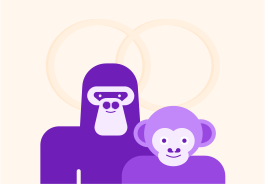YOU ARE LEARNING:
Moving on from the Linnaean System

Moving on from the Linnaean System
A three-domain system has been developed by Carl Woese, which revolutionised the classification of living things
The Linnaean system of classification divides all living things into 5 kingdoms based on what?

Using the Linnaean system, when a new species was found it would be examined and its physical features measured and recorded.
How did biologists decide which group to place a new species in?
A) A set of rules that they had to follow. B) Detailed scientific judgement based on analysis. C) Human judgement based on what they could see.

Observation has always been important in classification, first with the naked eye, then a magnifying glass and finally microscopes. How did each of these developments help classify new species?

Advances in microscopes allowed anatomical characteristics and the insides of cells to be examined in increasing detail. Do you think this changed the way the final judgement was made?

Biochemistry is the study of how living things use reactions to stay alive (respiration etc.). Carl Woese (1928-2012) realised that different organisms make use of different reactions. He used this to propose a new system of classification. Why didn't Linnaeus use this approach?

Carl Woese used biochemistry and the details of cellular structures to suggest a 3 domain system, as illustrated above.
These are then sub-divided, so the eukaryota contains the animals, plants, fungi and protists for example.

Do these domains replace the kingdoms from the Linnaean system?
A) Yes, completely! B) No, but they add a new level to the system. C) No, not at all.


Linnaeus made a start at classifying organisms...
... but Carl Woese and later scientists have used more modern techniques to build on Linnaeus's groundwork.

Archaea are primitive bacteria that live in extreme environments. They can be sub-divided into the halophiles and the thermophiles. Halophiles, (salt lovers), live in very salty environments. Where might thermophiles live?

The image shows the cells from a typical plant, animal and bacteria. Plants and animals are classed as eukaryota.
Bacteria are a separate domain.

Can you spot the reason why bacteria and eukaryota are in different domains?
A) Bacteria do not contain any organelles (mitochondria etc). B) Bacteria do not contain any genes. C) Bacteria are much smaller. D) Bacteria contain fewer organelles than eukaryota cells.


A new single celled organism is found in the Arctic Ocean. It does not like high temperatures or strong salt solutions. It contains DNA, but no nucleus. It has no mitochondria that we can see. What domain do you put it in?

More recently, analysis of genes (DNA) has been used to help classify organisms. Why is this a useful addition to the process, do you think?

The newer domain-based classification is an improvement on the Linnaean system as it uses more hard data to determine groupings. Why is this better?

So, to summarise...
Linnaeus
Developed the 5 kingdom approach to classification. The 5 kingdoms were Monera (including bacteria), Protista, Fungi, Plantae and Animalia.
Later scientists like Carl Woese...
...used more modern techniques to create the three domain system. These domains were Archaea, Bacteria and Eukaryota.
